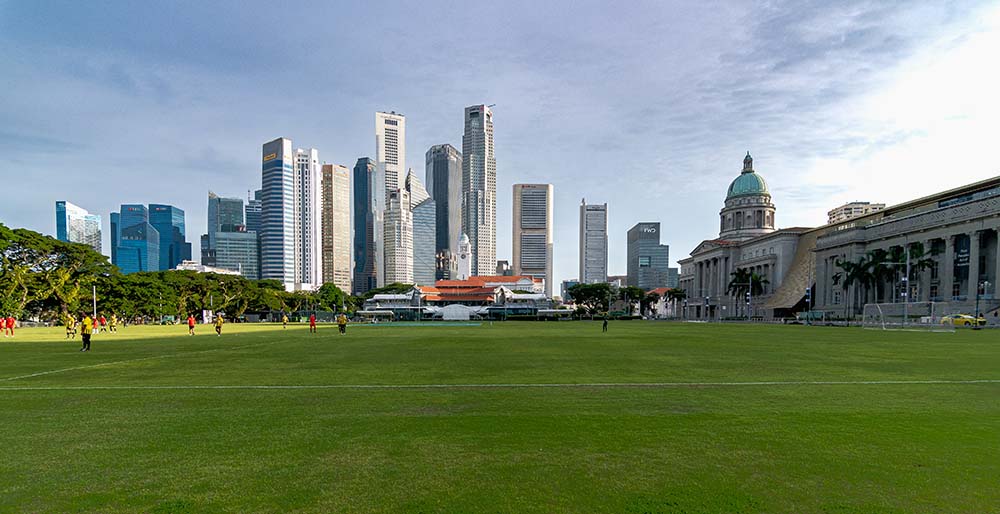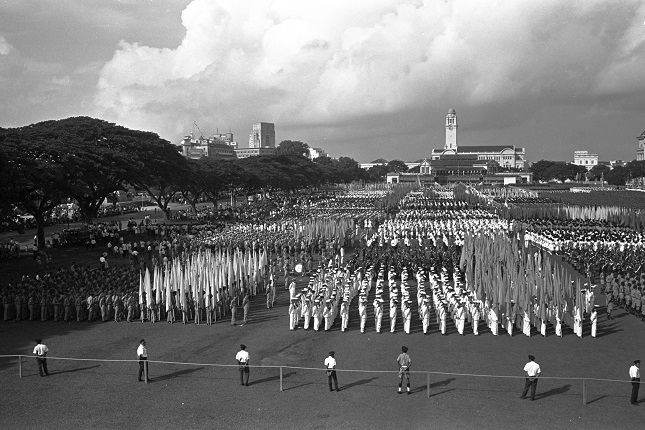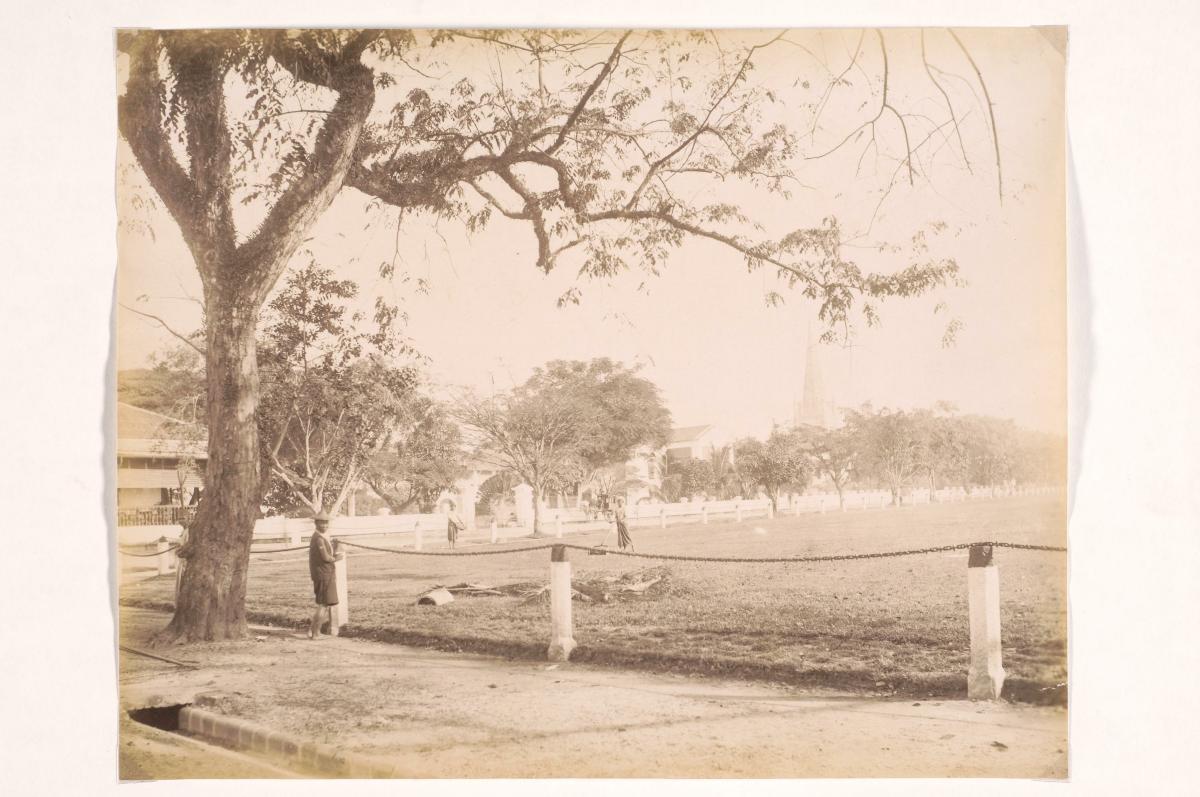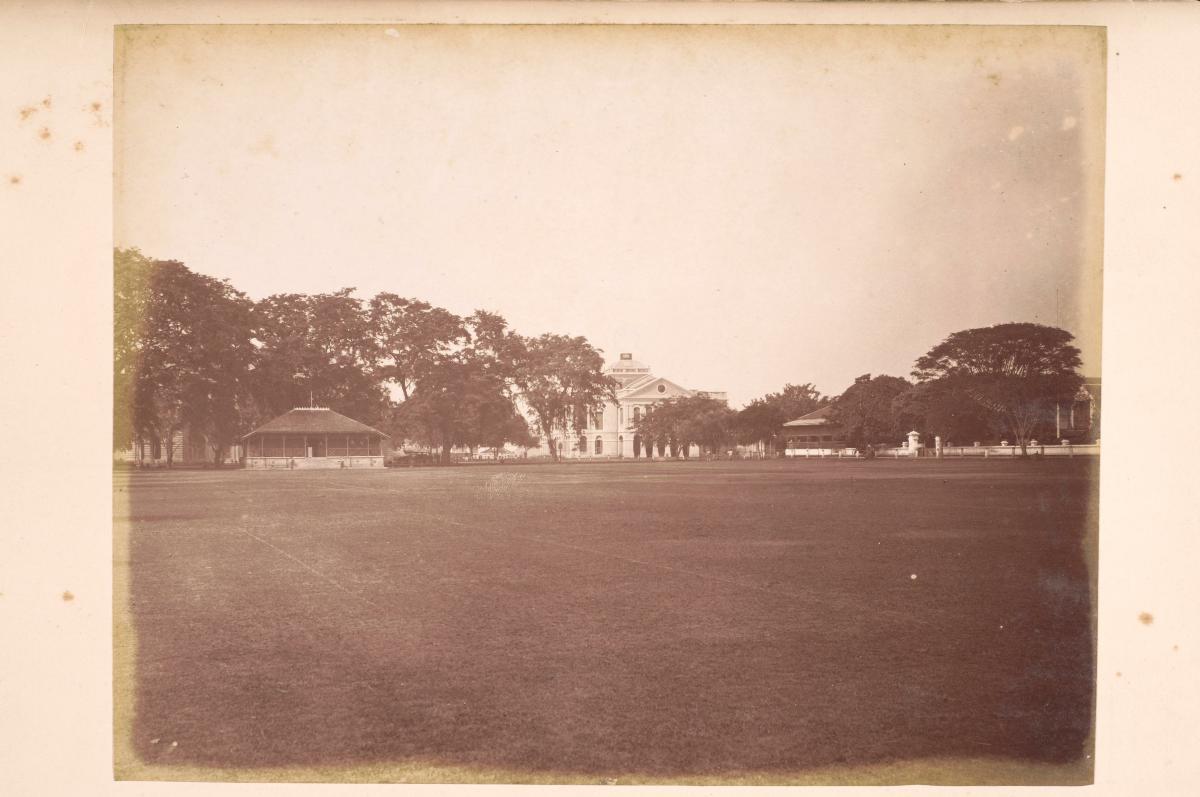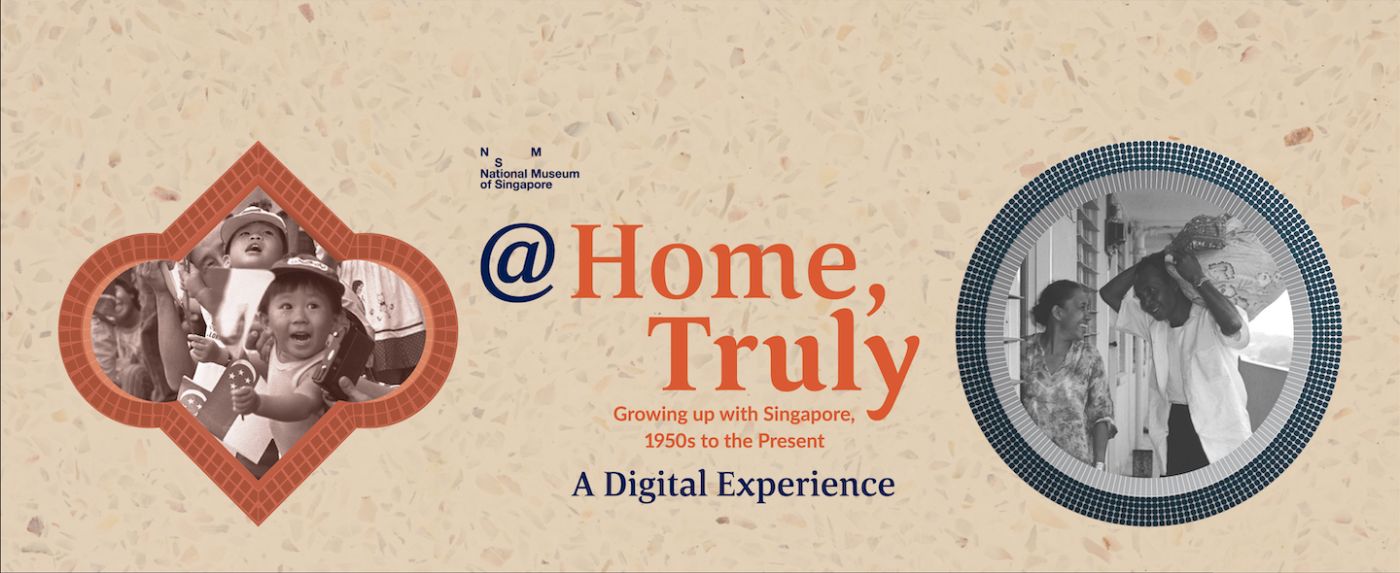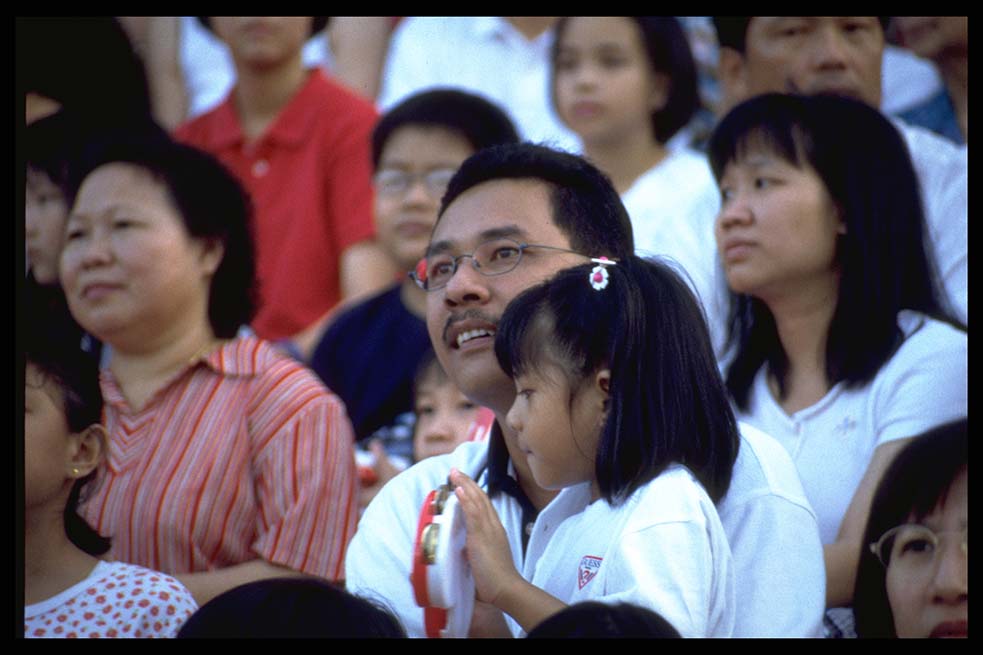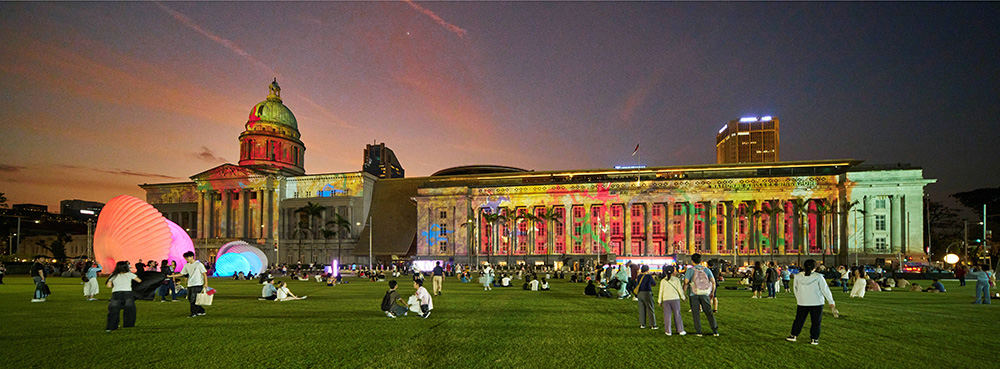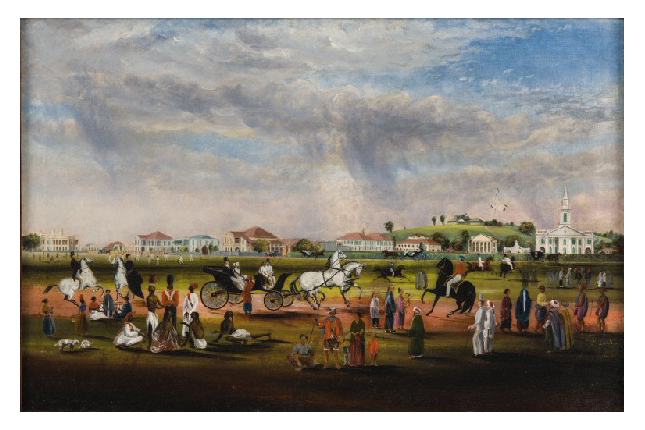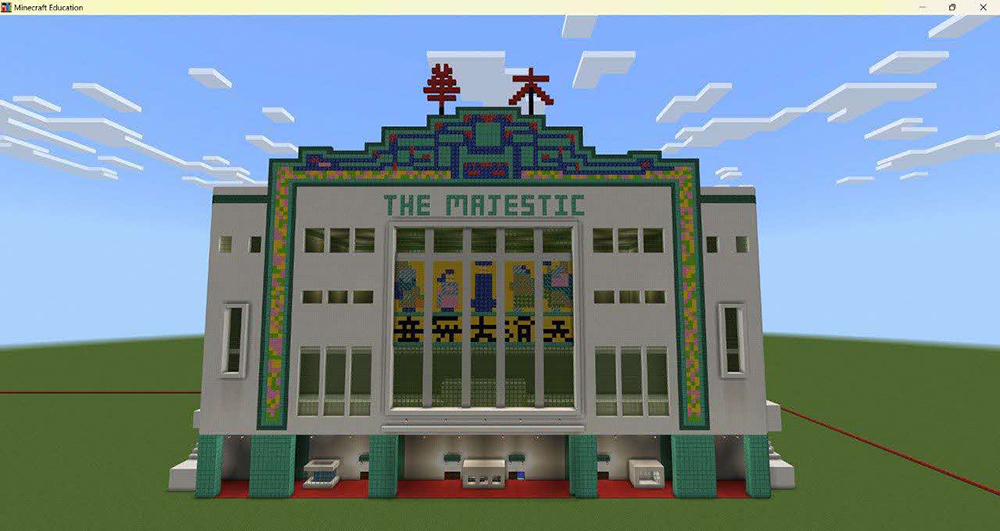Gazette Date: 9 August 2022
The Padang is one of the oldest open spaces in Singapore for public recreation and a commemorative space for people to gather, witness and participate in key milestones of Singapore’s history.
Now fronting the Former Supreme Court and Former City Hall buildings, the Padang is a key landmark in Singapore. Its open green space stands out amidst colonial buildings around its perimeter and the larger commercial core of the city centre to its south-west.
Drawing Out a Green Space
In Munshi Abdullah’s account of the 1819 landing, an “open space” was described where The Arts House presently stands. The open space was recorded as a settlement that included the Temenggong’s house; it may also have been the same “open space” where Sultan Hussein Shah and Stamford Raffles later signed the 1819 treaty.
The open space was subsequently cleared and artificially flattened to meet the needs of the colonial settlement. Raffles intended for the open space to be reserved for public use, but his absence between 1819 and 1822 saw the construction of private houses around the area. The open area later appeared in the 1828 Jackson Plan as “Open Square”, and was subsequently referred to as the Plain, the Esplanade, and subsequently the Padang, around 1907.
A Place for Recreation and Celebrations
A key feature of the Padang was its public nature. As one of few open spaces accessible to the colonial public, the Padang evolved to become a prominent recreation ground that served both the colonial elites as well as non-Europeans, especially on occasions such as the New Year’s Day sports events. Now most known for the cricket matches on its Southwestern end, it also hosted sports events such as football and rugby. The use of the Padang as a sporting ground continues to the present day.
The Padang was also a space for official celebrations and festivities, such as royal birthdays, jubilees, and coronations. Notably, the bronze statue of Stamford Raffles was unveiled on the Padang in celebration of Queen Victoria’s Golden Jubilee, on 27 June 1887. Celebrations by non-European communities, such as Lunar New Year, Thaipusam, and the Prophet Muhammad’s Birthday were also held on the Padang.
A Witness to Historical Events
As a prominent open area surrounded by key government and civic buildings, the Padang has also become a commemorative space where the public gathered to witness key milestones in Singapore’s history. These include:
12 September 1945
A victory parade on the Padang was held by returning British forces on the Padang to mark the end of the Japanese Occupation, after the formal signing of the surrender document in the neighbouring Municipal Building (now the Former City Hall).
3 June 1959
Singapore’s first elected legislative council held a victory rally at the Padang in celebration of Singapore’s attainment of full internal self-governance. 50,000 members of the public attended the celebrations.
3 December 1959
The installation ceremony of Yusof bin Ishak as Singapore’s Head of State, the Yang di-Pertuan Negara, took place in the Municipal Building Chamber (later known as the City Hall) six months after the proclamation of Singapore’s full internal self-governance. Following the ceremony, Yusof Ishak stepped onto the Municipal Building steps to address the crowd gathered on the Padang. The event also marked the beginning of Singapore’s first National Loyalty Week, during which the state flag, coat of arms, and national anthem were officially introduced.
16 September 1963
A large-scale rally and march-past was held at the Padang as the highlight of week-long celebrations marking Hari Malaysia (Malaysia Day). Singapore’s merger with the Federation of Malaya, Sarawak, and North Borneo was formally proclaimed by then-Prime Minister Lee Kuan Yew at the Padang.
National Day Parades
From 1961-1963, Singapore, as a state with full internal self-governance, celebrated National Day on 3 June at the Padang. As a republic, Singapore celebrated National Day on 9 August, holding the first National Day Parade at the Padang on 1966. National Day Parades were subsequently held annually at the Padang until 1975. In 1995, it was decided that the National Day Parades would be held at the Padang every five years due to its historical significance.
The SG50 National Day Parade was celebrated there on 9 Aug 2015 and an exception was made to celebrate the National Day Parade at the Padang in 2019 (a year earlier) as part of the Bicentennial commemorations.
Gatherings, Rallies and Protests
The Padang was also the venue for significant gatherings, rallies, and protests.
A victory rally was held by the Chinese community at the Padang on 15 September 1945. The parade celebrated the end of the Second World War and the defeat of Japan in their homeland (China) after nine years of war.
On 7 October 1973, 500 students from Nanyang University demonstrated at the Padang regarding perceived governmental bias against the university and its founder, Tan Lark Sye. Five student leaders presented then-Deputy Prime Minister Toh Chin Chye with a petition.
More recently, the Padang played host to round-the-clock queues formed by Singaporeans paying their last respects to founding Prime Minister Lee Kuan Yew, who laid in state at the Parliament House between 25-28 March 2015. Members of the public queued for hours, supported by members of the Singapore Armed Forces and other volunteers. Four ceremonial 25-pounder guns were fired in honour of Lee as the State Funeral Procession moved past the Padang.
Features
Since the construction of private European houses around its perimeter in the 1820s, the Padang’s surroundings have been marked by distinctly Neo-Classical buildings, some of which have since been demolished. These include John A. Maxwell’s house (1827, later renovated and now known as The Arts House), the old Saint Andrew’s Cathedral (1836), the Singapore Cricket Club (1884), the Former City Hall (1929), and the Former Supreme Court (1939).
The Padang used to border on the sea. Successive land reclamations have since pushed the sealine to its present position at Queen Elizabeth Walk. It is presently bordered by Connaught Drive, Saint Andrew’s Road, and Stamford Road. The Singapore Cricket Club and Singapore Recreation Club sits on either ends of the Padang.
The Padang Today
Today, major sporting events such as the Singapore Cricket Club International Rugby Sevens and the Singapore Marathon are held at the Padang. Since 2008, the Singapore Grand Prix circuit passes by the Padang and the grandstand erected on it, via Saint Andrew’s Road.
A footpath across the Padang allows public access at all times.
Our National Monuments
Our National Monuments are an integral part of Singapore’s built heritage, which the National Heritage Board (NHB) preserves and promotes for posterity. They are monuments and sites that are accorded the highest level of protection in Singapore.




